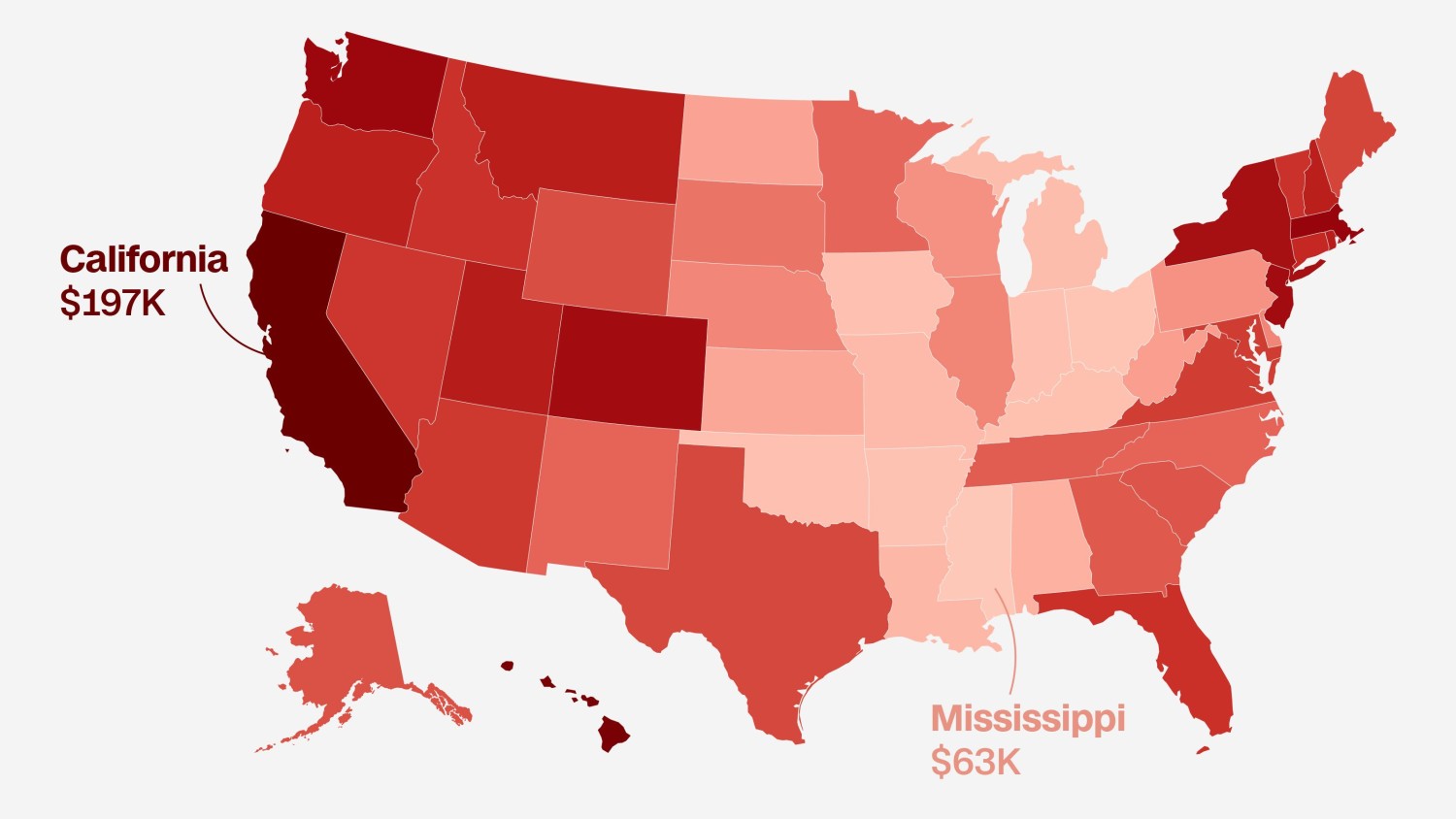This article is more than
1 year oldRoth vs. Traditional 401(k): Where to Put Your Money for Retirement?

The 401(k) was built on a simple idea. Set aside money from each paycheck to save for tomorrow and get a tax break today.
Many workers now have another option: Save the tax break for tomorrow, too.
That is the promise of the Roth 401(k), a relatively new retirement tool that is funded with after-tax money and grows tax-free in the years after. In many ways, it is like the Roth IRA, but with the additional benefit of allowing workers to save significantly more than is possible in an IRA, not to mention the company match.
Thousands of companies have added Roth 401(k)s to their retirement plans, one of many new—and sometimes confusing—options designed to give workers more flexibility in retirement saving. Putting money into Roth 401(k)s could give savers more spending money, and lighter tax burdens, in old age.
Roth accounts aren’t the best choice for everyone, and deciding how much of your money should go into Roth versus traditional entails calculating your current spending, future taxable income, life expectancy and other factors, some of which are unknowable.
Percent of retirement plans offering RothcontributionsSource: Vanguard Group2014'15'16'17'18'19'20'21'220102030405060708090%
The decisions can leave even savvy investors a little overwhelmed.
Linda Thomas, 48 years old, is an engineer with the U.S. Navy. She has been saving and investing since college. When it came to projecting her retirement income to figure out whether a Roth was a good idea, she ultimately called on her financial adviser for help.
“I’m an engineer. I love math,” the Fredericksburg, Va., resident said. “I wasn’t comfortable that I understood all the inputs.”
Despite the complexity the Roth choice has introduced, it creates the opportunity for some to reduce lifetime tax bills and leave more money for retirement or heirs.
Since the money coming out of Roths can be tax-free, it can be used to supplement taxable income during years when retirees would otherwise be pushed into higher tax brackets. And starting in 2024, Roth 401(k)s will be exempt from the distributions the government will still require with traditional accounts. That means Roths can be left intact for heirs, who don’t have to pay tax on the money either, although they must drain the account within 10 years.
Roth 401(k)s are open to employees across the income spectrum, including high earners who are barred from contributing to Roth IRAs. But not everyone should contribute to a Roth.
The classic Roth candidates are those convinced their tax rates will be higher in retirement than they are now, a description that fits many younger workers with decades of raises ahead of them.
For midcareer workers, it can be harder to predict whether their tax rates will be higher or lower in retirement. While some sources of retirement income, such as Social Security and pensions, provide estimates of benefits, it is impossible to predict the investment returns that determine retirement account withdrawals. Some people might intend to work in retirement or move to an income tax-free state such as Florida only to find that circumstances change.
Many have yet to grapple with the Roth decision. Among workers with access to a Roth 401(k), only 17% made contributions to one last year, according to Vanguard Group.
When to do a Roth
To decide whether to contribute to a traditional or Roth 401(k)—or both—compare your current tax rate and the rate you expect to pay in retirement.
For many younger workers, the math favors the Roth.
Matt Klopatek, 32, and his wife are contributing to Roth 401(k)s. They are paying a 22% tax on the money before it goes into their Roth accounts, but Klopatek figures that their incomes will rise in coming decades, subjecting them to higher tax rates in retirement.
Klopatek, a transportation manager at a manufacturing company, said his employer funnels his matching contributions into a traditional 401(k). As the couple’s tax bracket rises, he plans to shift more of his Roth 401(k) contributions into traditional accounts to secure upfront tax breaks. For now, “the more we can get into a Roth, the better off we’ll be in the future,” he said.
David Brown, associate finance professor at the University of Arizona, said that once a person moves out of the 12% tax bracket, his research indicates it is best to start dividing savings between a Roth and a traditional account.
The rule of thumb that he and his co-authors recommend: add 20 to your age and put that percentage of the money you are saving for retirement into a traditional 401(k), with the rest in a Roth.
When to stick with traditional 401(k)
A traditional 401(k) is often the better choice for workers in their peak earning years.
Jeffrey Levine, chief planning officer at Buckingham Wealth Partners, said he recently met with an adviser whose client is in the top 37% tax bracket and was considering Roth 401(k) contributions. While the man earns more than $700,000 this year, his income is likely to drop to about $200,000 in retirement, leaving him in a much lower tax bracket later, said Levine, who recommended against the Roth contributions.
Peak-earning workers should look for other ways to get money into Roth accounts if they move into a lower tax rate, said Isabel Barrow, director of financial planning at Edelman Financial Engines.
For example, if someone retires at 60 and taxable income falls, that can present an opportunity to move—or convert—traditional IRA or 401(k) savings into Roth accounts at a low tax cost, she said.
Another tactic Barrow recommends is the mega-backdoor Roth conversion, which can allow high earners to build a pot of tax-free retirement savings without giving up traditional 401(k) contributions and the tax breaks for making them.
To take advantage of the strategy, you have to work for a company that lets employees make after-tax contributions of as much as $43,500 to the 401(k) plan and then convert the money to a Roth 401(k) or IRA.
The strategy is most effective when an employee can convert his or her after-tax contributions soon after making them and pay income tax on the earnings before much appreciation occurs. Many large-company plans do this automatically.
When to divide your contributions
Advisers say putting a portion of 401(k) savings into a Roth can help workers hedge their bets if they aren’t sure what their future tax rates will be.
“It helps even to have 10% in a Roth,” said Roger Young, vice president at T. Rowe Price. Roth money can supplement taxable income in years in which retirees would otherwise be pushed into a higher tax bracket or face higher Medicare premiums.
Congress will soon require older, higher-earning workers to put at least some money into a Roth 401(k). A law that goes into effect in 2026 means people ages 50 and older with salaries above $145,000 have to funnel the extra money they can choose to contribute to a 401(k) on top of the $22,500 tax-advantaged limit into a Roth.
Here are other reasons to consider Roth contributions:
Your tax rate is likely to stay the same. While the best candidate for a Roth is someone whose tax rate is likely to rise in retirement, the flexibility of a Roth can make the strategy a winner even if you expect your tax rate to stay the same in retirement, said Young.
Once required distributions from traditional 401(k)s and IRAs begin, many high earners who have saved diligently in those accounts end up in the same tax bracket in retirement or higher, he added.
To move a significant amount into a Roth, big savers might want to contribute to a Roth while working and look for opportunities to convert money when temporarily in a lower tax bracket, said Young.
You think tax rates are heading higher. Stacy Miller, 51, is contributing to a Roth 401(k) to protect herself from the risk of higher tax rates in retirement.
A financial adviser in Tampa, Fla., Miller and her husband are in a 24% bracket. If Congress leaves current U.S. tax rates alone, she expects to be in a 22% bracket in retirement.
But the tax cuts Congress enacted in 2017 are scheduled to expire at the end of 2025, which could put the Millers in a 28% bracket. Their tax burden could also rise if they eventually move to a state with an income tax.
Given those uncertainties, Miller feels it is worth paying 24% on Roth contributions today to avoid potentially higher rates in retirement.
If current tax rates stick, she will have paid 24% to avoid a 22% tax rate in retirement. That is a relatively small price to pay for not having to worry about what Congress will do, said Miller, who said she would think twice if the rate gap were wider.
You want to leave your 401(k) to heirs. Since Roth 401(k)s will be exempt from the required distributions that traditional IRAs and 401(k)s are subject to, they can be passed on intact to heirs.
Many nonspouse heirs who inherit Roth and traditional retirement accounts after 2019 must drain the accounts within 10 years of the owner’s death. That can push heirs of traditional IRAs or 401(k)s into higher tax brackets. But Roth heirs suffer no tax consequences.
To protect your spouse. For couples, the argument for a Roth grows, since a surviving spouse is likely to pay a higher tax rate in retirement.
Because higher tax rates take effect for single filers at lower income levels, a survivor can benefit from having tax-free Roth money to spend without inflating taxable income, Young said.
You want to max out your savings. Workers who want to contribute the maximum to a retirement savings account can accrue more wealth with a Roth than a traditional 401(k).
The reason: While the rules allow individuals to put $22,500 before taxes into a regular 401(k), they can put as much as $22,500 after taxes into a Roth.
Even if a worker were to contribute the $22,500 pretax maximum to a traditional 401(k) and then take the upfront tax savings for that contribution and invest it in a brokerage account, he would still likely come out ahead with a Roth. That is because profits on a brokerage investment are taxed; the Roth, by contrast, grows tax-free.
Write to Anne Tergesen at anne.tergesen@wsj.com
Keywords

Newer articles
<p>After sparking fears among fans by posting a series of crying photos, Justin Bieber has taken to social media with a huge announcement.</p>
Kendrick Lamar Beat Drake By Being Drake
UN assembly urges Palestine membership after vote
How Kendrick Lamar and Drake changed rap beefs forever Rapid-fire releases and fast pace of modern life elevate diss war to levels unparalleled in hip-hop history.
Taylor Swift concert photo horrifies internet
Sean 'Diddy' Combs asks judge to reject lawsuit alleging rape of 17-year-old girl in 2003
Ukraine finds itself in a grave situation. Russia appears to be advancing
Ellen to make TV comeback after two years
Island nation erupts into violence, three dead
Will Zionism survive the war?



